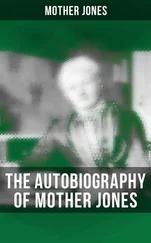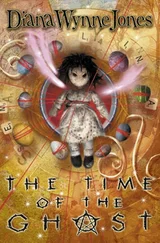Mutations are the raw material of evolution. Life progresses; it does not decay, but every individual is mortal. As we grow old our machinery corrodes until at last it breaks down.
Parr of this erosion comes from genetic changes within the body and part from the delayed effects of genes advantageous when young but harmful when old. To build an adult from a fertilised egg involves making hundreds of millions of cells, each with its own copy of the original message. The copying process is imperfect, and there are plenty of chances for mistakes. Even in adulthood most cells continue to divide. Red blood cells, for example, are renewed every four months or so. Kvcry minute everyone makes thousands of miles of DNA. As a result, huge numbers of mutations build up in body cells. Each individual is an evolving system whose identity changes from day to day.
Some of these changes can lead to disaster. Many cancers result from genetic accidents. Indeed, some cancers look more and more like genetic diseases. They represent a decay of the genetic message and a loss of control by DNA of the cells in which it lives. Age is a reflection of the same process. As our bodies are in a constant fever of replication, the older we are the more divisions there have been and the more chance for error. The cells of a new-born baby are separated by just a few hundred divisions from the egg; but mine, as a fifty-something-year-old are distanced from it by thousands. My genes have had more chances to mutate than have those of a baby. What is worse, they are less effective at repairing the damage. The cells of old people even contain altered genes which make inappropriate proteins. Thus, many aged Europeans have small amounts of sickle-cell haemoglobin in their blood. This gene is normally found in Africans but has, in their case, appeared as a new mutation within their elderly bodies.
Ageing accelerates with age. The lowest risk of death is at about the age of twelve — just before puberty. After that, the rate doubles every eight years or so, giving a seventy-six-year old about a two hundred and fifty times greater chance of dying than a teenager. The power of accelerated decay is impressive. If the death rate stayed at that of a twelve-year-old, most people would live to a thousand and there would be a small but noticeable proportion of people around who were born in the last Ice Age. Unfortunately, our obsolescence is such that even centenarians are rare. All this helps to explain why cancer is a disease of the old; so much so that even if the disease were eliminated altogether lite expectancy would go up by only about four years. The biological identity crisis which we define as old age and which is solved by deaih happens when the genetic message becomes so degenerate th.u its instructions no longer make sense. The rate ol ageing is programmed. Mouse cells in culture stop dividing after about four years, while human cells can carry on for almost a century.
Parts of the message disappear with time. DNA is packaged into chromosomes. Each has a specialised length of DNA at its end that marks the point at which the DNA-duplication machinery stops and loops back on itself, rather like the crimp at the ends of shoelaces that stops them from fraying. This gets shorter with age. In a baby it is about twenty thousand letters long, while in a sixty year-old it is less than half that length. Cells from tumours have lost even more DNA from the chromosome ends. About forty letters are dropped from this section of the message each time a cell divides, so that an old body works from an imperfect instruction manual, full of typographic errors. The same happens to mitochondria! genes, which are shot full of holes as rhe years conrinue their inexorable progress.
Old age is itself in part the result of genetic accidents. Human cells in culture age more quickly when they carry a defect which increases the mutation rate and some children who inherit a tendency towards cancer also show symptoms of senility much earlier than normal. The immune system, which has the highest mutation rate of any part of the body, often fails as the years pass by. It seems that the decay of our elderly selves is, to some degree, a consequence of mutation. The influence of old age in damaging sperm and egg adds a certain irony to the claims of one institution devoted to the reversal of the decay of the human race, the Centre for Germinal Choice in California, in which Nobel Prize-winners make genetic deposits for hopeful mothers. The depositors may once, as they claim, have approached a genetic ideal, bur that perfection has been marred by age.
Why, if our genes change and decay through our lives, does the human race not degenerate as one generation succeeds another? The answer lies in sex. To define sex is simple; it is a process that brings together genes from different ancestors. It provides a chance to purge ourselves of the harmful mutations which arise in each generation and represents, in more ways than one, the antithesis of age.
Almost every novel, ptay or work of art revolves around the eternal triangle of sex, age and death. All three — and our very existence — emerge from errors in the transmission of genes. Humanity is not a degenerate remnant of a noble ancestor. Rather we are the products of evolution, a set of successful mistakes. Genetics has solved one of our oldest questions; why people decay, but Homo sapiens does not.
Chapter Five CALIBAN'S REVENGE
The plot of George Eliot's novel Daniel DcrotitLi is.1 convoluted one. It revolves around the adventures of himself, the adopted son of a baronet. After souk- hundreds of pages he develops an unexpected interest in things Hebrew and — some time later — it transpires that Daniel Deronda was, quite unaware, the son of a Jewish woman. His biology had triumphed over his background.
Many people are obsessed by the role of inheritance compared to that of experience. The infatuation goes back long before genetics. Even Shakespeare had a say: in The Tempest Prospero describes Caliban as "A devil, a born devil, on whose nature Nurture can never stick." There are still endless (and rather empty) discussions about whether musicality, criminality or intelligence is inherited or acquired and more serious debates about the role of genes and environment in illnesses such as cancer or heart disease. Such questions are often unresolved, and may be unresolvable.
Galton, in Hereditary Genius, went to great lengths to show that talent runs in families and was coded into their biology. He failed to point out that more than half his 'geniuses' turned up in families with no history of distinction at all and concentrated only on those who supported his hereditarian views. Most claims that talent (or lack of it) is inherited are based, like Galton's, on little more than a series of selected anecdotes. Even the descendants of Johann Sebastian Bach disappeared from the musical firmament after a few generations. Family likeness says little about the importance of biology; after all, one attribute much shared by parents and children is bank-balance.
Nevertheless, the question of nature versus nurture is of endless fascination. Dozens of studies purport to show that behaviour is under genetic control. Whole sets or degenerate families were once held up for inspection: the Tribe of Ishmael, the Jukes Clan and the Kalikaks (whose pseudonym is Greek doggerel for good/had). One was traced to an eighteenth century sailor who married an upright woman but had an affair with a slattern. His wife's branch gave rise to a lineage of spotless virtue while the other was a burden on society, as firm proof that morality lies in the genes.
Geneticists find queries about the importance of nature and nurture dull, for two reasons. First, they scarcely understand the inheritance of complex characters (those, like height, weight or behaviour which are measured rather than counted) even in simpler beings like flies or mice and even with traits which are easy to define. Second, and more important, geneticists know that the perpetual interrogation — gene or environment? — is often meaningless. Its only answer is that there is no valid question.
Читать дальше
Конец ознакомительного отрывка
Купить книгу












